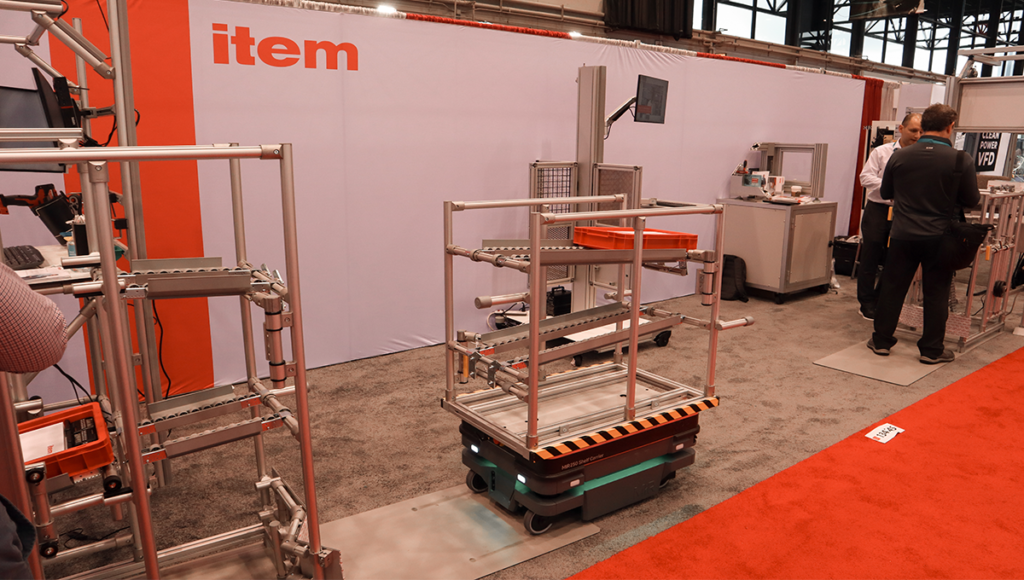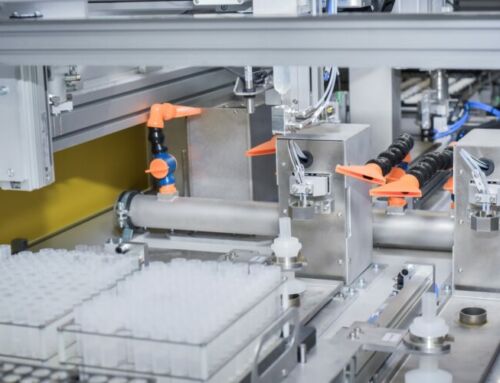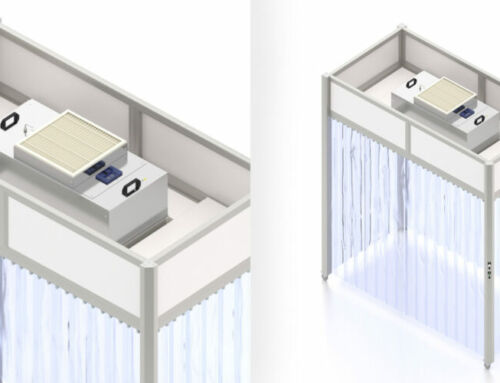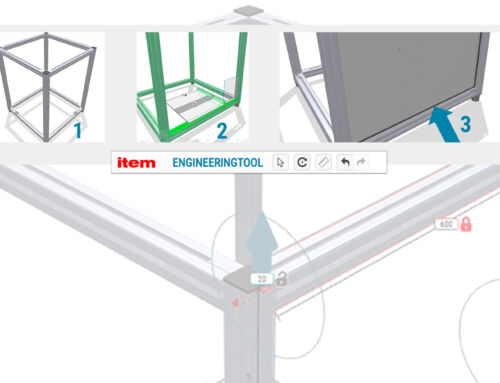Saving time has become even easier with the integration of panels to the item Engineeringtool.
The item Engineeringtool enables a fully digital process chain – from online designs and documentation through to coordination, purchase and assembly. As a result, everyone involved in the project saves a great deal of time. Entirely in keeping with the continuous improvement process (CIP), the item Engineeringtool is being optimized on an ongoing basis. Regular updates extend the product portfolio and add new practical functions. Customer feedback is a particularly important part of this process. “Numerous customers have approached us about including panel elements, and we are delighted that we have now been able to oblige,” says Christian Thiel, product manager and online tools expert at item. Users of the item Engineeringtool can now integrate closed panel elements into their designs – including panels made from plastic, acrylic glass and polycarbonate – along with table tops in three different materials. Over 50 product variants are available. Thanks to the newly included panel elements, applications such as material-optimized tables, workshop trolleys and machine cabins can now be created in the item Engineeringtool in their entirety.
Support for everyone, from beginners to experts
Whether you are looking for basic information about the item Engineeringtool or details of the latest innovations, you will find everything you need here and additional configurators, all fast and easy-to-use with the support of item Experts ready when needed.
Fastening panel elements in just a few clicks
Like all components in the item Engineeringtool, panel elements are easy to place in the 3D environment using drag-and-drop controls. Adapting parameters such as material, colour, length and width to the relevant requirements is very straightforward. A number of different Multiblocks are available for fastening closed panels. These special panel fastening elements are made from polyamide (PA) and die-cast zinc (Zn). Generally speaking, Multiblocks can be fastened anywhere in the profile groove and on the panel element.
Multiblocks have a number of special features. “A gap of 1.5 mm is required right around the panel, but users don’t need to worry about that at all, because the tool also takes care of this for them,” says Thiel. A fastening assistant helps users configure the panel fastening and make a number of presettings. Once the panel has been added, the correct number of fasteners are automatically added, too – along with all machining steps for connections and all small parts. The fit to frame feature is also an enormous help, automatically selecting the right size of panel. One particularly practical feature is that both the panel dimensions and the number of fasteners are automatically corrected if the size of the design changes, meaning everything fits together perfectly.
Designing material-optimized tables complete with table-top online
Table tops can be fitted using Table-Top Fastening Sets and, in the case of the Lean Production Building Kit System, Table-Top Side Fastening Brackets. This means Tables, Economy, which are as lightweight as they are stable, can be designed in the item Engineeringtool in their entirety. These tables and further example applications (including options without panel elements) are available as preconfigured solutions. “Previously, the basic frame was the limit, but now a complete table is possible,” emphasises Thiel. With such applications, too, all the benefits thus take effect during the subsequent processes. These include convenient sharing of the complete design using the project number, quick delivery of projects designed online, and generation of the recommended assembly sequence for the entire solution in the 3D assembly guide.
The menu for the preferred fasteners has also been extended, meaning fasteners for the MB Building Kit System and the Lean Production Building Kit System can now be configured more precisely. This advantage also applies to the new panel fasteners. The key benefit of preferred fasteners is that exactly the right solutions can be incorporated from the very outset (in various scenarios), so fewer manual changes are required later on. Further simplifications of the tool are being planned. In this case, too, as Thiel explains: “The advantage is that the item Engineeringtool is a 100 percent in-house development. That gives us all manner of possibilities and means we can adapt the tool to the needs of our customers, making the whole thing quicker, easier and less expensive for them.”
Are you interested in digitalisation and what the future holds for mechanical engineering? Then we have something that’s right up your street! Simply subscribe to the item blog by completing the box at the top right.










